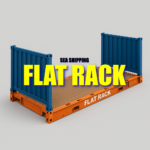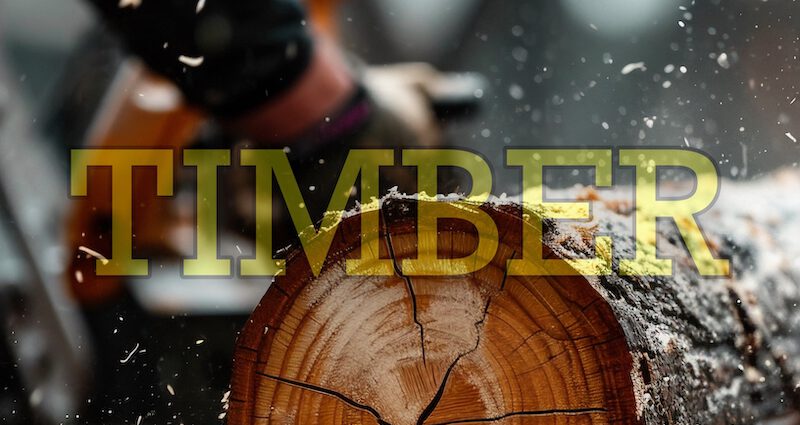
Malaysia has long been a key player in the global timber industry, supported by rich forest resources, strong government policy, and a mature value chain. The sector comprises various subsectors, of which solid timber, medium-density fibreboard (MDF), and timber moulding are among the most commercially significant and export-oriented. These segments cater to both domestic construction and international furniture and building materials markets.
This report presents an in-depth evaluation of Malaysia’s timber industry with a focus on these three subsectors. It discusses market dynamics, competitive advantages, challenges, opportunities, and strategic considerations for future growth.
Industry Overview
Sector Contribution
The timber industry is one of Malaysia’s top five commodity-based sectors, contributing over RM 22 billion in export revenue annually (as of 2024). Malaysia exports to more than 150 countries, with major destinations including Japan, the United States, the European Union, and the Middle East.
The government, through the Malaysian Timber Industry Board (MTIB) and Malaysian Investment Development Authority (MIDA), provides active support to promote sustainable practices, encourage value-added production, and improve market access.
Subsector Analysis
Solid Timber
Definition and Application
Solid timber refers to natural wood that is cut, sawn, and processed into lumber or planks without composite treatment. It is commonly used in construction, flooring, furniture, door and window frames, and general carpentry.
Market Performance
Solid timber remains a backbone of the industry, particularly in domestic construction and regional exports. Key species include meranti, kempas, balau, keruing, and rubberwood.
Key Strengths
- Abundant Tropical Hardwood: Malaysia’s forests, especially in Sarawak and Sabah, produce high-quality hardwood species in demand globally.
- Sustainable Forestry Certification: Growing compliance with MTCS and FSC enhances buyer confidence.
- Processing Infrastructure: Nationwide sawmills and kiln-drying facilities ensure supply reliability and quality.
Challenges
- Raw Material Constraints: Logging regulations and conservation efforts have restricted supply.
- Labour Issues: Shortage of skilled labour and reliance on foreign workers.
- Price Volatility: Prices fluctuate based on species availability and global demand cycles.
Opportunities
- Rising demand for eco-certified solid wood in luxury construction and premium furniture.
- Export expansion to emerging markets such as India and the Middle East.
- Adoption of advanced drying and grading technologies to boost export quality.
Medium-Density Fibreboard (MDF)
Definition and Usage
MDF is a type of engineered wood product made from wood fibres, wax, and resin, compressed into panels under heat and pressure. It is widely used in furniture manufacturing, cabinetry, wall panelling, and interior design.
Market Position
Malaysia is one of Asia’s top producers and exporters of MDF, with manufacturers concentrated in Pahang, Johor, and Sabah. The country exports to over 30 countries, with a strong presence in Japan, Vietnam, Middle East, and South Asia.
Competitive Advantages
- Rubberwood Availability: Rubber plantations provide a consistent supply of raw material.
- Export-Oriented Production: High-capacity plants cater specifically to international standards (E0, E1).
- Government Incentives: Investment tax allowances and grants for automation and green technology.
Market Trends
- Increasing global demand for low-emission and eco-friendly MDF.
- Growth in modular furniture and DIY home improvement segments globally.
- Transition to formaldehyde-free resins in line with ESG standards.
Key Challenges
- Resin and chemical cost inflation impacting margins.
- High energy usage in production, leading to environmental scrutiny.
- Competition from regional players such as Vietnam and China.
Strategic Opportunities
- Innovation in fire-retardant and water-resistant MDF.
- Expansion into African and Latin American markets.
- Adoption of Industry 4.0 technologies to optimize efficiency and reduce waste.
Timber Moulding
Definition and Applications
Timber mouldings are decorative wooden strips used for aesthetic and functional purposes in interiors — including skirting, cornices, picture rails, door frames, and stair railings.
Market Dynamics
Malaysia is a global exporter of timber mouldings, particularly to markets like Japan, Australia, Europe, and North America. Products are manufactured from tropical hardwoods and rubberwood, processed to high standards of finish and accuracy.
Strengths
- High Product Customization: Ability to meet specific design, finish, and size specifications of buyers.
- Sustainable Sourcing: Moulding producers often carry FSC and PEFC certifications.
- Technological Capability: CNC machining, UV coating, and automated finishing lines improve product quality.
Challenges
- Labour-intensive operations are facing shortages and rising wage pressure.
- Dependence on traditional markets exposes the sector to geopolitical risks and demand fluctuations.
- Rising cost of raw timber due to supply constraints and sustainability compliance.
Growth Opportunities
- Increasing demand for green building materials in the West.
- Expansion into premium mouldings for heritage restoration and luxury interior projects.
- Development of engineered timber mouldings for better durability and performance.
Environmental and Regulatory Considerations
Sustainable Forest Management
Malaysia practices sustainable logging through licensing, replanting requirements, and strict harvesting quotas. The Malaysian Timber Certification Scheme (MTCS) is internationally recognized and promotes responsible forest management.
ESG and Carbon Footprint
Stakeholders are placing increasing emphasis on ESG:
- MDF and moulding producers are adopting cleaner adhesives and low-emission processes.
- Energy audits and solar energy adoption are gaining traction.
- Certification and traceability are becoming prerequisites for market access.
Trade Policy and Compliance
- Export-oriented firms must comply with various international standards such as CARB, REACH, and CE marking.
- Non-tariff barriers in EU and US markets are increasing.
- Bilateral and regional agreements (e.g., RCEP, CPTPP) provide tariff advantages for Malaysian products.
SWOT Analysis
| Strengths | Weaknesses |
|---|---|
| Abundant tropical hardwood resources | Labour shortages and high dependence on foreign workers |
| Government support and tax incentives | Raw material supply fluctuation due to conservation |
| Strong global market presence | Limited R&D in product innovation |
| Sustainable forest management practices | High energy and resin costs in MDF production |
| Opportunities | Threats |
|---|---|
| Green building and sustainable product demand | Environmental activism and deforestation scrutiny |
| Digital transformation and automation | Strong competition from Vietnam, China, Indonesia |
| High-margin premium export products | Volatility in global housing and construction markets |
| Emerging markets in Africa, Central Asia | Increasing non-tariff trade barriers |
Strategic Recommendations
- Enhance Upstream-Downstream Integration
- Vertical integration to control timber supply chains and improve profit margins.
- Invest in plantation forests to ensure long-term resource availability.
- Expand Product Portfolio
- Develop engineered timber products like laminated veneer lumber (LVL), cross-laminated timber (CLT), and hybrid mouldings.
- Introduce moisture-resistant and fire-retardant versions of MDF and mouldings.
- Improve Operational Efficiency
- Adopt automation, IoT, and predictive maintenance to reduce downtime and improve productivity.
- Implement lean manufacturing and zero-waste policies.
- Invest in Market Diversification
- Reduce reliance on top three export markets by targeting emerging economies.
- Participate in international trade fairs and e-commerce platforms to increase visibility.
- ESG and Sustainability Positioning
- Establish robust ESG policies and reporting to attract ESG-conscious investors and buyers.
- Embrace carbon labelling and life cycle analysis to highlight environmental benefits.
The Malaysian timber industry remains a critical pillar of the national economy, with solid timber, MDF, and timber mouldings serving as key value drivers. While the industry faces resource constraints, labour challenges, and increasing competition, it is also well-positioned to benefit from the global shift toward sustainable construction and green materials.
By leveraging its natural resources, enhancing technological adoption, and expanding into new high-growth markets, Malaysia can maintain its leadership in the global timber industry and continue to deliver economic, social, and environmental value.
For Event Media Coverage can contact us by email to us
Please subscribe our Youtube channel for more updates
https://www.youtube.com/@ALMediaChannel
MALAYSIA MOST CREATIVE INTERIOR PHOTOGRAPHER, ALAN LIM
https://www.alifebe.com/malaysia-interior-photographer-alan-lim/
ALAN LIM, Founder of AL Media Group
http://www.alan-lim.com










